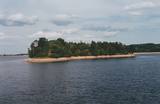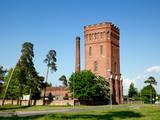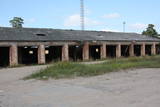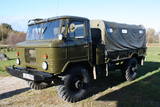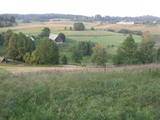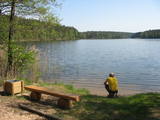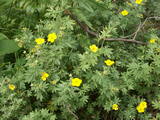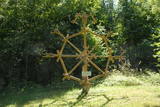| Nr | Name | Beschreibung |
|---|---|---|
|
Established: 1931. The arboretum was set up at the suggestion of Latvia’s distinguished author Anna Brigadere. After her death and until 1935, the arboretum was supported and expanded by book publisher Jānis Rapa. There are some 180 foreign trees and shrubs of various kinds here. Some of the plants are outside the arboretum itself.
Unique plants: The Bunge’s Ash (Fraxinus chinensis), the Eastern Black Walnut (Juglans nigra), the American Buckeye (Aesculus glabra), the Smoketree (Cotinus coggyria), the White Mulberry (Morus Alba), and the Kentucky Yellowwood (Cladrastis kentukea).
|
||
|
Before its flooding, the canyon of the Daugava River between Pļaviņas and Koknese was one of the most outstanding and beautiful parts of the Baltic terrain, and Oliņkalns hill was one of the largest castle hills in Latvia. The Andrejs cliff as up to 20 metres high, and it was part of the Daugava canyon. Before the area was flooded because of the construction of the Pļaviņas hydroelectric power plant, there were rapids near the hill that made it hard for rafters to sail down the river. Today it is a small island in the reservoir of the plant (it can be seen from the side of the Rīga-Daugavpils highway (A6) opposite Stukmaņi). It is separated from the shore by 300 metres of river, under which the Dūņas valley is now resting. A small part of the ramparts of the castle hill can still be seen on the island along with the ruins of an open-air stage and a few metres of the dolomite cliff that have remained above water. It is thought that the Alene castle was on the hill in the 13th century. Latvian mountain climbers installed a memorial stone in 1998 opposite Oliņkalns hill. |
||
|
Saimnieki piedāvā vietu, kur aizbraukt brīvā laika pavadīšanai, atpūtā ģimenei Kurzemē. Šeit viesiem ir iespēja aplūkot sākot no dažādu laiku lauksaimniecības tehnikas un darbarīkiem, līdz pat kara laika paliekām, kā arī dažādu laiku sadzīviskos priekšmetus. Katram priekšmetam seko arī stāsti, kas ir piedzīvoti vai tikai dzirdēti. Tāpat apmeklētājiem ir iespēja apskatīt mājas iemītniekus,kas ir veidoti ar pašu rokām. Asākām un patīkamākām sajūtām pieejama 350 metrus gara Baskāju taka. |
||
|
Für 2018 ist der Erwerb von Alpakas geplant. Die Führungen sind auf Kinder ausgerichtet. Kinder können sich mit den Reitpferden beschäftigen, die Angus-Rinder und den Milchhof besichtigen. Durch das Territorium des Hofes werden die Kinder mit einem speziellen Anhänger für einen Kleintraktor gefahren. |
||
|
Encircled by apartment buildings, some of which are abandoned, the Tosmare water tower, which was built in 1905 in a pseudo-Gothic style and is made of red bricks, stands tall and proud. It is 37 metres high. Steam pumps were once used to pump underground water into the tower (the pumps have survived to this very day). Water was delivered three times a day to the residents of Karosta. The tower is no longer used for its original purpose, however. The tower can be viewed from the outside at any time. This is a unique aspect of Latvia’s industrial heritage.
|
||
|
The Liv Coastline involves a series of shoreline villages from Ovīši to Ģipka along the shores of the Baltic Sea and the Bay of Rīga. Like Latvians, Livs are an indigenous population in Latvia, with ancestors who lived here at least 5,000 years ago. They populated extensive parts of Kurzeme and Vidzeme, and the area in which they lived the longest was Northern Kurzeme, on the shores of the Baltic Sea. Today visitors to the Liv Coastline mill meet real Liv fishermen, feel the aroma of smoked fish, enjoy traditional dishes, look at diverse ancient fences, learn about the reticent charm of the local landscape, enjoy the place where two seas, birds and people meet at Cape Kolka, hear the Liv dialect of the Latvian language, see rounded hillocks and swampy areas, visit the Šlītere lighthouse, and see the green-white-blue Liv flag, red bilberries, bird migration routes and blue cows. The oldest evidence of the life of Livs can be found in the Liv centres. The Liv language and culture are still alive in place names, handicrafts, folk costumes, and the world view and lifestyle of people who live in the area. The Liv language and cultural values are part of Latvia's national cultural heritage, and traditional Liv culture is part of the Latvian Canon of Culture. |
||
|
Das Restaurant befindet sich im Zentrum von Talsi, am Rande der Lielā Straße. Hier kann man Gerichte aus dem Kochbuch der Großmutter, aus der Küche der Welt und ein breites Angebot an Weinen bestellen. Das Restaurant arbeitet mit lokalen Bauern zusammen. Lettische Küche: Sauerkrautsuppe mit gebratenen Schweinerippen, Graupensuppe mit Waldpilzen, Hering mit Quark, Graupengrütze, geschmorter Braten mit geschmortem Sauerkraut, Lammfleischbraten, Quarkfladen, in Lettland hergestellte Biersorten. |
||
|
In der Zeit der Sowjetunion befand sich in der Abteilung der Panzer ein Lehrregiment. Heutzutage ist das Objekt degradiert und bewirtschaftet werden nur die Gebäude der Renovierung und die wirtschaftlichen Gebäude der ehemaligen Abteilung der Panzer. Das übrige Territorium wird nicht genutzt und es ist nicht bewacht.
|
||
|
Edgars Kārklevalks, operator of a guesthouse Pūpoli, has a restored Soviet military GAZ-66 truck in which he offers historical and informational tours of Northern Kurzeme. The route includes former military territories.
|
||
|
Taka ap Ozolu Mazezeru. Purvaino krastu posmā, ap ezera rietumu galu, ierīkotas gājēju laipas. Novērojami purva, meža un ezera augi, dzīvnieki un biotopi. Jūlija beigās īpaši krāšņi zied ūdensrozes. Blakus atrodas Ozolmuiža ar parku.
|
||
|
Die Haupttätigkeit des bäuerlichen Betriebs ist Getreidezucht. Seit 2006 beschäftigt sich der Betrieb mit Milchviehzucht und seit 2008 – mit der Herstellung von Käse und Quark. Zur Zeit sind im Betrieb mehr als 200 Melkkühe, von deren Milch Rohmilch, Joghurt, Käse und Eis hergestellt werden. |
||
|
Atrodas Amatas ielejas augstajā krastā, autoceļa (A 2) Rīga – Veclaicene malā. Plašs ēdienu klāsts, lielas porcijas, iecienīta tālbraucēju šoferu maltītes ieturēšanas vieta. |
||
|
Dieses Territorium schützt die höchsten Erhebungen im Alūksne – Hochland, den Dēliņkalns – Berg, sowie seine Biotope an seinen Hängen. Die örtliche Landschaft ist auch geschützt. Es gibt hier Abfahrtsski – Routen und seine südliche Seite ist besonders reizvoll.
|
||
|
Brīvdienu mājiņas Jūvgumegi atrodas Kurzemes reģiona Mazirbē, Slīteres nacionālajā parkā. Viesiem tiek piedāvātas četrvietīgas un divvietīgas naktsmītnes ar bezmaksas privātu autostāvvietu. Visās ir pieejama virtuve ar ledusskapi un plīts virsmu, kā arī tualete, duša izvietota uz terases. Līdz liedagam 400m. |
||
|
Ein gemütliches Restaurant, dessen Köche vom örtlichen Pflanzen- und Tierreich inspiriert werden und die zu jeder Jahreszeit in Vergessenheit geratene Geschmäcker anbieten. Hoch geschätzt werden die Produkte sowohl der örtlichen als auch der weltbesten Meister. Die wundervolle Verbindung von verschiedenen saisonalen Geschmäcken und Wein macht Umb Roht zu einem Restaurant, das verschiedene geschmackvolle Genüsse anbietet. |
||
|
The centre was opened in 2018 with the aim of facilitating tourism in Alsunga and the historical Suiti territory and to offer information about the district, thus establishing a positive and attractive image for Alsunga and the historical territory in Latvia and abroad. |
||
|
Das Ziel dieses Territoriums besteht im Schutz der natürlichen und kulturellen Landschaften im Gebiet des Oberen Flusstals der Daugava, wo es eine große biologische Vielfalt gibt. Naturpfade und Fahrradrouten wurden im Naturpark eingerichtet. Der Fluss ist auch für Bootstouren geeignet. Die Flusswindungen im Daugava – Naturpark sind Teil dieses Territoriums (siehe “Naturparks”).
|
||
|
Der Sumpf, in den Schwefelwasser fließt, befindet sich auf der linken Seite des Abava – Flusstals. Das ist der einzige Ort in Lettland, wo das geschützte Fingerkraut in der Wildnis gefunden wird. Dieser Busch bedeckt etwa 1/5 des geschützten Territoriums. Hier sind Wälder, verschiedene Wiesenarten und Schwefelflüsse, darunter auch jener, der Teufelsauge genannt wird.
|
||
|
Folkloras taka "Jāņkalni" iepazīstina ar mūsu senču rakstiem, zīmēm un dievībām, kas ir mūsu folkloras mantojums. Folkloras takas (garums: apm. 1,5 km vai 2 stundas) mērķis ir arī iepazīstināšana ar senlatviešu ieražām, folkloru, kā arī tautu dainu izprašana. Piedāvā iziet Latvijas karti - labirintu ar 19 etnogrāfiskajiem novadiem. Gids Jums sniegs izsmeļošu stāstījumu un atbildes uz interesējošiem jautājumiem.
|
||
|
Das Geschäft in Jelgava bietet biologische, natürliche Lebensmittel, gesunde Produkte für Kinder, glutenfreie Produkte, ökologische Kosmetik und Reinigungsprodukte an. Angeboten werden Produkte aus natürlichen Zutaten vonlettischem Landwirten und Heimbetrieben. |
||

